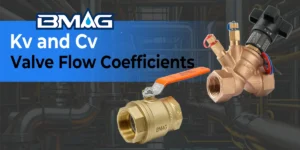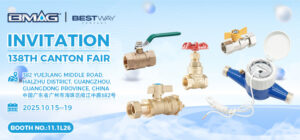I. Ro-ràdh
1.1 Cridhe a 'bhalbhaichean: The Importance of Material
Brass has long been a preferred material for valve bodies and components due to its excellent combination of corrosion resistance, ease of machining, and overall cost-effectiveness. Ge-tà, not all brass is created equal. The manufacturing process of the raw material—the brass rod—plays a decisive role in the final performance, durability, and reliability of the valve.
1.2 The Core Question: Continuous Casting vs. Extrusion
For valve manufacturing, the journey from raw alloy to finished product typically begins with a brass rod. Two of the most common foundational materials are continuous cast brass rods and extruded brass rods. Continuous cast and extruded brass rods: for two materials that appear remarkably similar, what are the differences, what are their respective advantages, and ultimately, which is the best choice for manufacturing brass valves?
II. Continuous Cast Brass Rods

2.1 Definition and Manufacturing Process Continuous casting is a process where molten brass is continuously solidified into a semi-finished profile, typically a round rod. The feature of this method is that the material solidifies directly from a liquid state into its final shape without any additional forging or extrusion steps. The simplified process flow is: Melting -> Holding -> Cooling -> Traction -> Cutting.
2.2 Characteristics and Advantages of Continuous Cast Rods
- Microstructure: The grain structure is generally uniform. Ge-tà, due to the nature of direct solidification, it can be susceptible to microscopic porosity or inclusions.
- Mechanical Properties: Continuously cast rods have relatively lower tensile strength and hardness, but they exhibit better toughness after hot rolling and forging.
- Dùmhlachd: The density is slightly lower than that of extruded rods.
- Machinability: It offers good machinability, making it well-suited for the rough machining of complex shapes.
- Cost-Effectiveness: The process is highly efficient and relatively low-cost, making it an excellent choice for high-volume production of parts where ultimate strength is not the primary requirement.
- Typical Grade Example: C37700 (Forging Brass) is often produced via casting methods before a final forging step.
2.3 Limitations
- Potential for internal defects (like microporosity) can compromise performance under high pressure or extreme conditions.
- The surface finish is typically not as smooth as that of extruded rods.
- Its resistance to high pressure and fatigue is comparatively weaker.
III. Extruded Brass Rods

3.1 Definition and Manufacturing Process Extrusion is a hot-working process where a heated brass billet is forced through a shaped die under immense pressure. The core feature of this method is the severe plastic deformation, which refines and elongates the grains, creating a dense and wrought microstructure. The simplified process flow is: Melting -> Heating -> Extrusion -> Cooling -> Stretching/Straightening -> Cutting.
3.2 Characteristics and Advantages of Extruded Rods
- Microstructure: The grain structure is fine, dense, and fibrous, resulting in superior material integrity.
- Mechanical Properties: It boasts excellent tensile strength, yield strength, and hardness, which are significantly superior to those of continuous cast rods.
- Dùmhlachd: The material is highly dense with virtually no porosity, giving it greater strength and superior pressure-handling capabilities.
- Machinability: It offers outstanding machinability, ideal for high-precision, high-speed machining, and yields a high-quality surface finish.
- Surface Quality: The surface is smooth and clean, with high dimensional accuracy.
- ATH-neartan crùbach: The denser, more uniform grain structure generally leads to better corrosion resistance.
- Typical Grade Example: C36000 (Free-Cutting Brass) is a prime example of a grade optimized for extrusion and machining.
3.3 Limitations
- The production cost is relatively higher.
- It may exhibit slight anisotropy (minor differences in properties along and perpendicular to the direction of extrusion).
IV. Comparative Analysis: Continuous Cast vs. Extruded Brass Rods
4.1 Key Differences at a Glance
| Feart / Item | Continuous Casting Brass Rod | Extruded Brass Rod |
| Manufacturing Process | Continuous solidification from a molten state | Hot deformation processing (forced through a die) |
| Microstructure | Uniform grains, potential for microporosity | Fine, dense, fibrous grains |
| Dùmhlachd | Relatively lower, may have micro-voids | High and uniform, virtually free of porosity |
| Mechanical Properties | Lower tensile strength, yield strength, and hardness | Superior tensile strength, yield strength, and hardness |
| Surface Finish | Generally fair | Sàr-mhath |
| Dimensional Accuracy | Generally fair | Àrd |
| Internal Defects | Potential for microporosity and inclusions | Extremely rare to non-existent |
| Machinability | Good machinability | Excellent machinability |
| ATH-neartan crùbach | Math | Better |
| Production Cost | Lower | Higher |
| Typical Applications | General-purpose, low-pressure environments | High-pressure, high-precision, industrial-grade use |
4.2 Impact on Valve Performance
- Neart & Pressure Resistance: Valves made from extruded brass rods can withstand significantly higher pressures.
- Sealing Performance: The denser material of extruded rods reduces potential leak paths, ensuring a more reliable seal.
- Seasmhachd & Lifespan: In demanding or harsh environments, valves made from extruded brass exhibit superior longevity.
- Machining Precision: While both materials can be machined to high tolerances, extruded brass provides a more uniform and consistent base material, enhancing final precision.
V. How to Choose Brass Rods for Brass Valves
The selection process begins with the alloy grade, dictated by the service environment. While C36000 Free-Cutting Brass is standard for its excellent machinability, lead-free alternatives like C69300 are mandatory for potable water applications. The chosen alloy must provide the necessary corrosion resistance and mechanical strength to withstand operational stresses.
Crucially, the rod’s manufacturing process is a non-negotiable factor. For any pressure-retaining or safety-critical component, onlyextruded brass rods are acceptable. Extrusion refines the grain structure and eliminates the porosity inherent in as-cast materials, imparting superior strength and metallurgical integrity. Using as-cast rods introduces severe risks of leakage and brittle fracture.
Mu dheireadh thall, verify material specifications and supplier quality. Specify tight dimensional tolerances and demand material certifications (MTRs) conforming to standards like ASTM B16. Ensuring supplier traceability and robust quality control is essential for guaranteeing consistent, reliable material for production.
VI. BMAG Commitment and Professional Advantage

6.1 Sourcing Superior Brass, Ensuring Quality at the Origin BMAG’s company operates a professional material procurement team that rigorously vets and selects suppliers of brass rods for valves. We enforce strict testing standards for material composition, mechanical properties, and microstructure to guarantee that every valve starts with the best foundation.
6.2 Tailoring the Best Solution for Your Application We possess a deep understanding of the strengths and weaknesses of different materials. Based on our clients’ specific needs and application scenarios, we recommend and utilize the most suitable copper grade. We also provide customization services to meet unique operational requirements.
6.3 Advanced Manufacturing and Strict Quality Control We leverage state-of-the-art equipment and refined craftsmanship in our valve manufacturing processes. We guarantee that every single valve undergoes stringent quality checks, including pressure testing and seal integrity testing, before it leaves our facility.
VII. Consult
7.1 Call to Action
- Visit BMAG’s website to explore our product details. (bwvalve.com)
- Contact the BMAG sales team for a professional consultation and a customized quote. (Link to contact page)
- Download our product catalog to learn more about our brass valve series. (Link to resource/download page)






